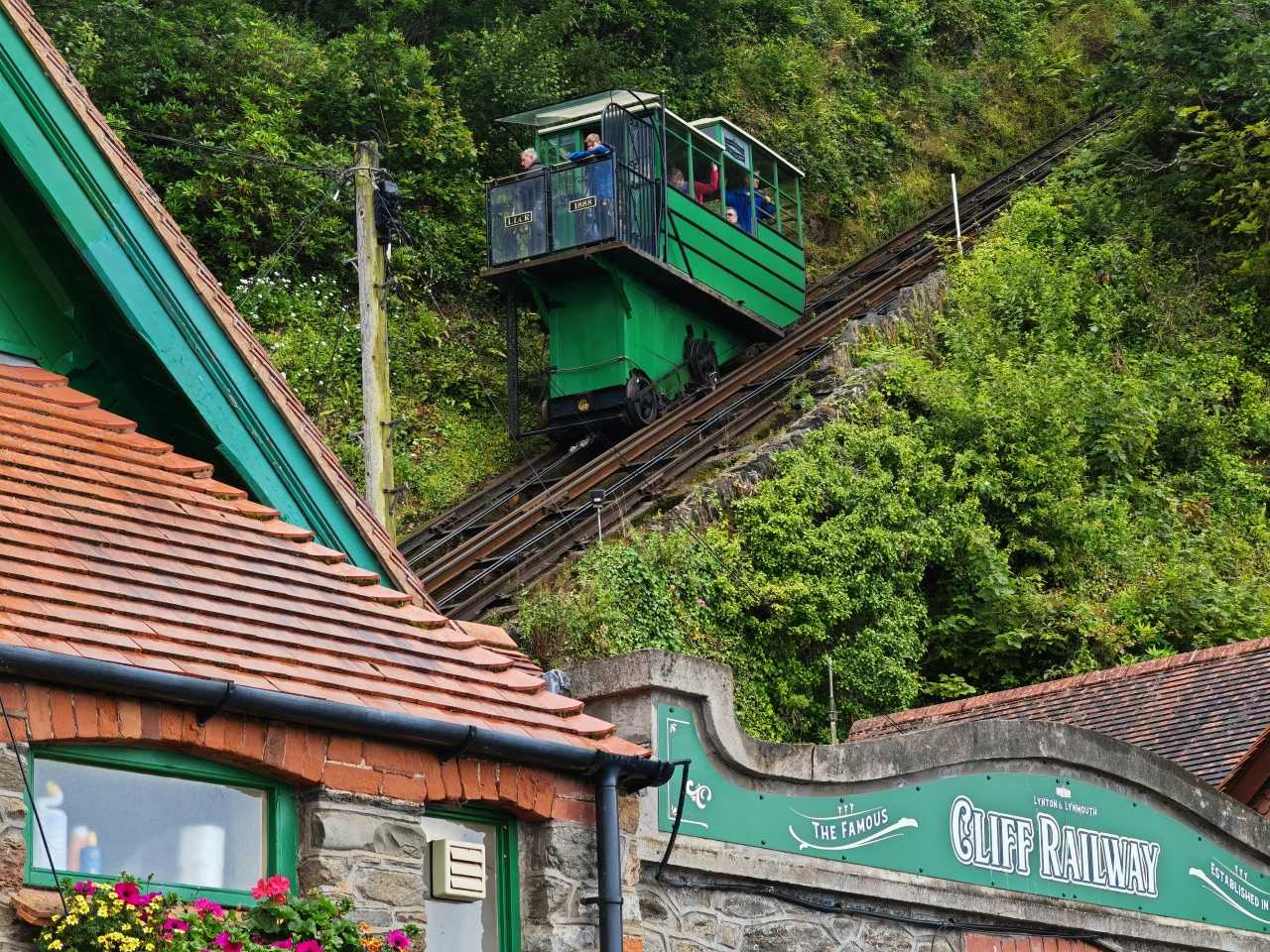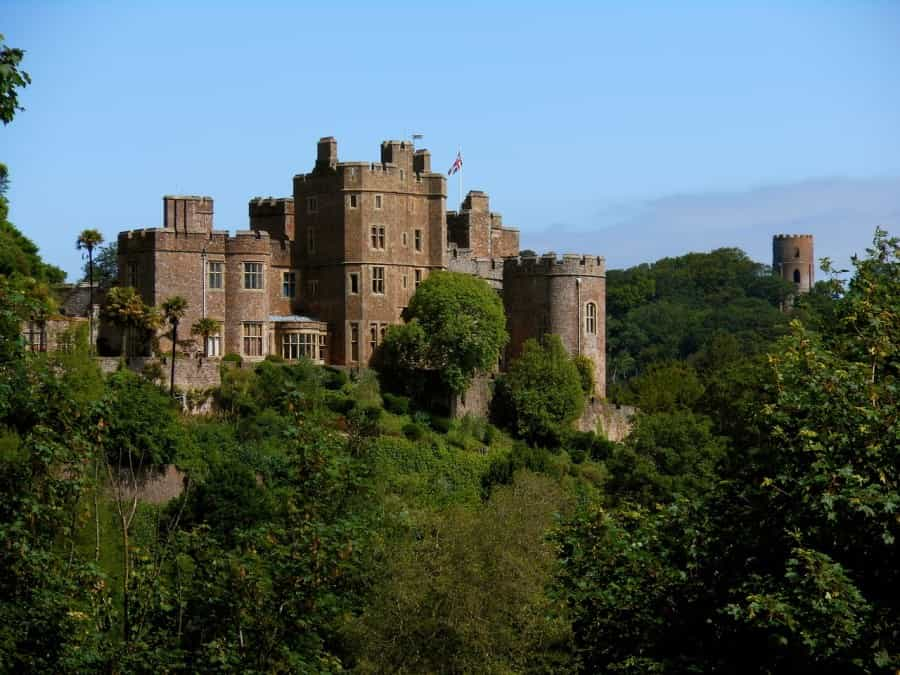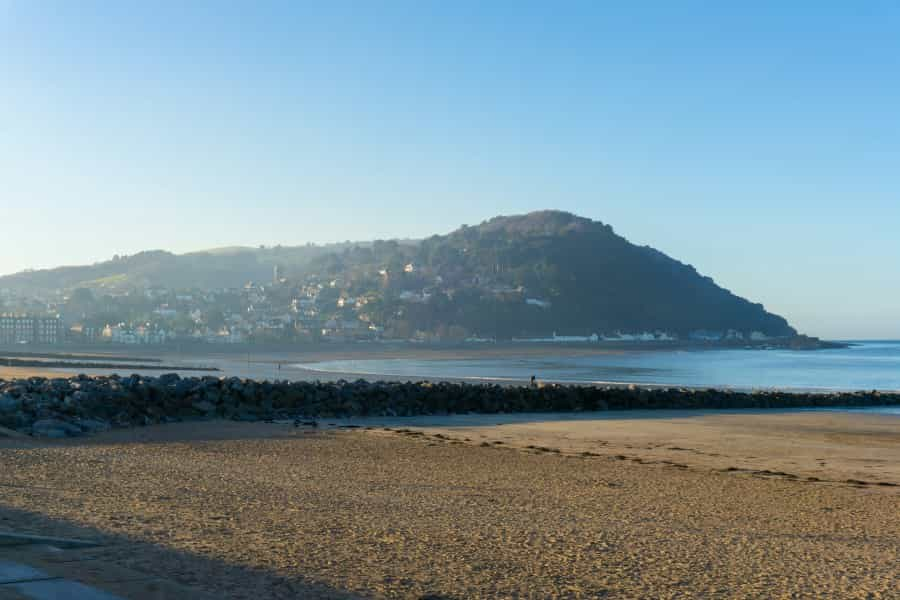Accessible Exmoor

Britain’s national parks believe that ‘the outdoors are for everyone’ and aim to provide accessible experiences, routes, resources and equipment wherever possible. Exmoor is no exception, and our guide to accessible Exmoor includes plenty of places where all visitors can do things like follow trails through the woods, ride on a heritage railway, visit the beach or explore historic buildings. It includes information about parking, the local terrain and accessible facilities, as well as details of where you can hire a mobility scooter or a wheelchair to make your visit easier. If you’re looking for an accessible holiday on Exmoor, you’ve come to the right place.
Accessible heritage trains
West Somerset Railway
This heritage steam railway runs for 20 miles along the coast and through the countryside on the edge of Exmoor from Minehead to Bishops Lydeard, and vice-versa. Trains run daily from early April to early October, with additional special services throughout the year.
Assistance dogs are welcome, and the railway aims to have an accessible coach on all standard services. Companions and carers of passengers with a disability travel free with a passenger paying full fare. All stations on the line are accessible too, except for Doniford Halt, which has a small, uneven gravel path. Please allow 25 minutes for boarding.
Full details are available on the West Somerset Railway website, including their accessibility statement.
Lynton and Lynmouth Cliff Railway
This delightful funicular railway has been carrying passengers up and down the cliff face between Lynton and Lynmouth since 1890. Eco-friendly, sustainable and great fun, it’s one of only three remaining fully water-powered railways in the world, and the highest and steepest of them all. The three-minute journey may be short, but it’s a unique experience and offers fabulous views along the North Devon coast.
The Lynton and Lynmouth Cliff Railway is open from February to November (operating continuously from 10am). Assistance dogs travel free, and wheelchairs and pushchairs need to be folded during the journey. The age and nature of this historic Victorian attraction mean that there are some issues that may affect access for some, but they make every effort to accommodate anyone who wishes to travel. If you have any doubts, take a look at the comprehensive access statement (with pictures).
Accessible nature trails
Heddon Valley
Managed by the National Trust, the beautiful wooded trails of Heddon Valley are favourites with hikers and nature lovers. The site has accessible parking and two circular trails that can be followed on a Tramper (an all-terrain mobility scooter), with two scooters available to hire seven days a week between April and September (£5 per day, call ahead to book). The 1.5-mile trail between Hunters Inn and Heddon’s Mouth runs alongside the river to a viewpoint overlooking the beach, while the four-mile route towards Woody Bay has fabulous views of the coast.
The Countryside Mobility website has accessibility details, along with a short film that gives you an idea of what to expect.
Wimbleball Lake
The 374-acre reservoir at Wimbleball Lake is popular with walkers and watersports enthusiasts, and there’s an accessible 2.5-mile path here from the café car park to the impressive dam on the River Haddeo, where you can watch the water plunging over a 160-foot drop into the valley below. It’s suitable for pushchairs and assisted wheelchairs, and you can also hire a Tramper to explore.
At the Wimbleball Fly Fishery there’s also a Wheelyboat suitable for wheelchair users (stable, with a flat deck and assistance with boarding), that will enable you to get out on the water if you’d like to try your luck at fishing.
Countryside Mobility’s Wimbleball page has details of both the trail and the boat.
Horner Wood
The ancient oak woodlands at Horner Wood on the Holnicote Estate are part of a National Nature Reserve, and there’s a car park here with designated parking spaces and an accessible toilet. There’s a 2.5-mile walk through the trees beside a stream that offers access for some, although it can be challenging, and you’ll need a robust, all-terrain tramper or off-road mobility vehicle to make the most of it. If you’d like an idea of what to expect before you visit, there’s a useful video on Exmoor National Park’s Horner Wood page.
Inclusive attractions
Exmoor Zoo
Exmoor Zoo sits on a 12-acre site on the edge of the park near Bratton Fleming and is open all year round from 10am. It’s home to the UK’s only black panther, plus cheetahs and African wild dogs, as well as alpacas, monkeys and many small mammals. There’s also a reptile house with tortoises and snakes, and exotic birds including parrots, herons and cranes. If you want to splash out, there are a range of keeper experiences available for an extra fee, and there are café and picnic areas where you can take a break.
Set on the side of a valley, the zoo is on a gentle slope, but 75% of the paths are tarmac and accessible to manual wheelchairs and pushchairs. The remainder are more suitable for electric wheelchairs or mobility scooters, and there are three scooters available to hire (£5 per day, please ring in advance at busy times: 01598 763352). Assistance dogs are welcome, carers receive a half-price concessionary ticket and there are accessible parking spaces and an accessible toilet on site. For full details, check out the zoo’s accessibility statement.
Dunster Castle and Gardens

Set on a wooded hilltop overlooking the Bristol Channel, Dunster Castle belonged to the Luttrell family for 600 years from 1376, before being taken over by the National Trust. Remnants of the original building on the site include a medieval gatehouse and a ruined tower, but renovations in the 19th century resulted in the building you can explore today – a handsome Victorian mansion filled with period furniture and historic artefacts, with pretty terraced gardens, woodland walks by the River Avill and a working watermill in its grounds.
The castle has designated parking for blue badge holders and an accessible toilet. Many parts of the site are accessible, including the Mill Walk in the River Gardens, the South Terrace and Green Court. There are two manual wheelchairs available to use on the ground floor of the castle, and you can also use your own, although you’ll need to be able to ascend a short flight of four shallow steps in the conservatory to get inside. The upper floors are accessible only by steps. The gardens are generally accessible and there are three (free) trampers available to help you explore, with a useful map that highlights the accessible areas. Assistance dogs are welcome all over the site. Full details of all accessible areas are available on the castle’s website.
Accessible beaches and coastal spots

Minehead beach
Right on the edge of the park, Minehead’s long sandy beach is backed by a long, level promenade with benches and seats where you can rest and take in the view, and plenty of places to stop for an ice cream, a cream tea or some fish and chips. Just behind the beach, Blenheim Gardens is dotted with trees, shrubs and flowers, and has level paths and accessible toilets. The Quay West car park near the harbour has designated accessible spaces, as do several others around town. The Minehead Bay website has details of the town’s accessible facilities.
Porlock Weir
For those times when you'd like to get some sea air, the pretty harbour at Porlock Weir has a car park with accessible spaces, and there are accessible toilets in the village. Although the shingle beach is inaccessible, it’s possible to explore the seafront and harbour area, where many shops and restaurants have ramps or level access. For further details, please contact the Porlock Information Centre.
Historic and cultural sites
Dunster village
A historic medieval village with 200 listed buildings, including the 17th-century Yarn Market, a 15th-century priory and a circular dovecote, Dunster is a charming place to while away a few hours. The High Street is dotted with art galleries, craft and gift shops, cafés and restaurants, while Dunster Castle and the Dunster Museum and Doll Collection are both wheelchair accessible, and there’s an accessible National Park Centre with films and interactive exhibits about the moor. Designated disabled parking spaces can be found in the High Street and Park Street car parks.
Lynton and Lynmouth
The twin towns of Lynton and Lynmouth are good picks if you want to experience a slice of seafront life on Exmoor. Clifftop Lynton’s pretty old town is home to galleries, cafés and colourful independent shops, while seafront Lynmouth has a pedestrianised high street, as well as shops and fishermen’s cottages around a charming harbour and an accessible National Park Visitor Centre. They’re connected by a fabulous cliff railway (see above), a fully water-powered Victorian marvel that offers superb coastal views on its three-minute descent.
Both villages have accessible car parks and toilet facilities. The accessibility page on the Lynton and Lynmouth website has information on local facilities and nearby places to visit.
Looking for somewhere to stay while you're in Exmoor? Staying in the open air is a wonderful way to make the most of your outdoor break – have a look at Pitchup's Exmoor campsites with disabled facilities and use the accessibility filters to see if there's a place that will suit your needs.
For more Exmoor accessibility information, take a look at these websites: